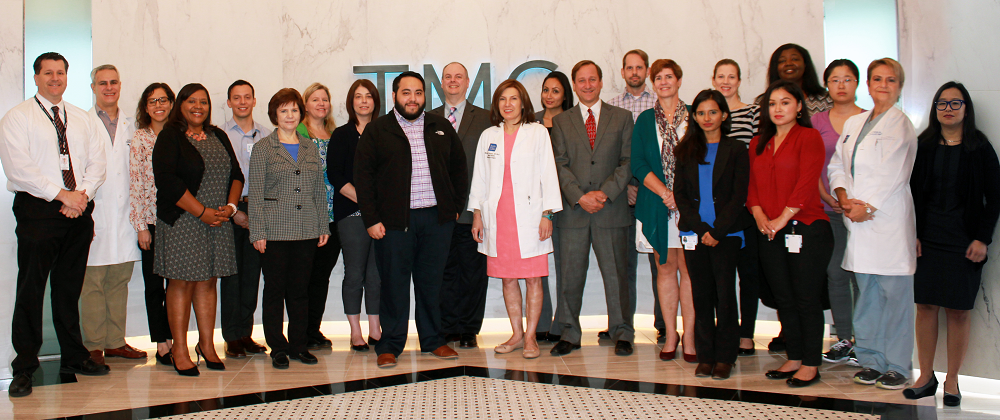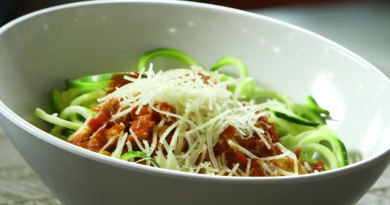Across the miles: 10 years after my mesothelioma diagnosis
 It was a Monday afternoon in November. The exam room seemed to get smaller and smaller as the doctor told me the diagnosis.
It was a Monday afternoon in November. The exam room seemed to get smaller and smaller as the doctor told me the diagnosis.
“You have a disease called mesothelioma.”
This was a time in my life when everything should have been blissful. I had just had my daughter more than three months earlier.
Our lives were beginning to settle into a comfortable rhythm, with one exception. I felt awful. What I thought were postpartum symptoms turned out to be something much more sinister.
Mesothelioma is a disease almost always caused by asbestos exposure, and at the time of my diagnosis, my doctor had never heard of anyone my age getting this disease. It usually struck men in their late 60s and 70s whom had worked in and around asbestos.
But here I was, a new mom, 36 years old, and my doctor gave me the dire prognosis. Without help, I would most likely die within 15 months.
The doctor left me with a sliver of hope: there was a risky surgery that was being performed on mesothelioma patients with limited success. With my young age and otherwise healthy body, this surgery was my best option for surviving.
My hope was a surgeon named Dr. David Sugarbaker, the world’s leading expert in malignant pleural mesothelioma. At the time, he had a program in Boston at Brigham and Women’s Hospital. My local doctor suggested we go there to see if I was a candidate for the surgery. Without missing a beat, my husband said, “Get us to Boston.”
I met Dr. Sugarbaker in the hallway of the clinic portion at the hospital. A quiet, but serious man, with a gentle smile and deep voice. He figured out who I was when I asked for directions.
Call me silly, but I took meeting him in such an unassuming way as a good omen of sorts. That meeting started a 10-year relationship that continues to this day.
I learned more about mesothelioma that day than I ever wanted to, but at least I knew what I was up against. The surgery, extrapleural pneumonectomy, consists of removing the entire lung, the affected pleura, half of the diaphragm, the lining of the heart and possibly a rib or two. The diaphragm and pericardium are then replaced with surgical gore-tex.
The surgery is not an option for everyone, and not easy to recover from, but at this point, I was willing to do anything I could to save my life.
I received my diagnosis confirmation before Christmas 2005 and my surgery was scheduled for Feb. 2, 2006. Groundhogs Day.
I immediately nicknamed my tumor Punxsutawney Phil, and joked about it seeing its shadow and having six more weeks of recovery. Humor always helped get me through the tough times.
My surgery was a success and Dr. Sugarbaker was thrilled with the results. I remember the advice he gave me upon dismissal from the hospital. He told me to go home and live my life.
Over the next year, I flew back and forth to his clinic in Boston four times for check ups. I went through chemotherapy and radiation at home and was on my way to recovery.
For the next five years I was traveling to Boston every four months for check ups. We developed quite the camaraderie over those years. He would always greet me with a big smile and the words “There’s my star patient!” It made any nervousness or anxiety I had about the appointment immediately dissolve, and I knew I was good for another few months.
Over the years, he asked me to talk at his new patient orientation and to speak at a couple of programs. I was glad to help out, and I loved being able to give back. It was during those years and with his encouragement, I started making myself known.
I started awareness campaigns about mesothelioma and asbestos awareness, sharing my story with anyone who would listen and letting people know that a mesothelioma diagnosis is not a death sentence.
I learned at my eight-year appointment that Dr. Sugarbaker had taken a sabbatical. Not a big deal, he had done this before, and I would see his colleagues for my check ups. I discovered he was starting a new program at Baylor College of Medicine in Houston.
I was torn. Should I follow him? Should I stay in Boston? I loved Boston. I had come to know the city and a few friends in the area over the years and was very comfortable there. It was routine, and to start all over at someplace new? I didn’t know if I was up for that.
I decided that if Dr. Sugarbaker himself invited me to Houston, I would go, until then I would stay in Boston, where my medical history was.
As luck would have it, in October of 2014, I attended a conference where Dr. Sugarbaker was speaking. I saw him in the hallway outside the conference room so I went out to say hello.
After a big hug, and the usual “There’s my star patient” greeting, he asked me point blank why I wasn’t seeing him in Houston. He proceeded to tell me all about the program he was building and how much he wanted me to see it and be a part of it.
So there it was, my personal invitation. He gave me his direct phone number and told me to call as soon as I could. I was not due for an appointment until May, but I couldn’t waste any time.
I was excited. It felt right. I called the clinic when I got home and was immediately impressed with the amount of care and professionalism the staff showed. Of course, I expected nothing less from them, after all Dr. Sugarbaker always ran a tight ship.
My experience at The Lung Institute at Baylor College of Medicine and the mesothelioma program could not have gone better.
Even though it was new to me, the staff treated me like a long lost friend. They have the utmost respect for Dr. Sugarbaker and it shows with their dedication and passion.
The program is the result of years of experience and knowing what patients need. This is due, in part, to the fact that Dr. Sugarbaker really listens to people and he makes sure to incorporate resources from social workers to dietitians.
The biggest change I noticed was in Dr. Sugarbaker himself. It was like a fire had been lit under him and the passion was back. He had lightness in his step that I hadn’t seen in a long time, and we spent a long time talking about his new program.
As a patient, to experience this was really a cool thing. I was with him when the program had just started in Boston, and now to be witness to a new one, in a new city, was really satisfying.
Ten years is a long time to be with someone, especially someone with a mesothelioma diagnosis, and I know that staying with Dr. Sugarbaker was the best decision I made.
He is more than my doctor; he is an important part of my life. I have the peace of mind that if anything were to happen in the future, that our history together, and his experience would help me face whatever that next step is.
I’m eager to see what he accomplishes with his new program and where it goes, but mostly I’m excited and thankful to once again be a part of it. It feels good to be able to give back in some way to the man who saved my life.
-By Heather Von St. James




Pingback: THE MESOTHELIOMA CURE . INFO » Across the miles: 10 years after my mesothelioma diagnosis - Baylor College of Medicine News (press release) (blog)
Pingback: THE MESOTHELIOMA CURE . INFO » Across the miles: 10 years after my mesothelioma diagnosis | Momentum - The … - Baylor College of Medicine News (press release) (blog)
mesothelioma disease can affect anyone, be it young or old … so input for how to cope with surgery
Pingback: Surviving mesothelioma, one appointment at a time